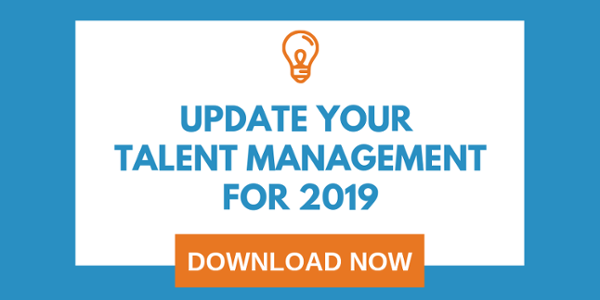How HR Should Handle Mental Health in the Workplace
When one in five American adults suffers from mental illness in any given year, HR has got to have its radar up. After all, the "human" part of human resources is pretty important, and when it comes to taking care of people, your HR team is likely to be the most tuned in as any part of the business. For that reason, you have the power to make a difference in employees' lives through proactive mental health resource knowledge.
Mental health is a tricky subject in the workplace. In America, employees suffering from illness often face:
- Stigmas about the disorder(s)
- Fear of being labeled a "problem" employee
- A lack of resources like money, time and insurance coverage to address the issue(s)
- A lack of accessibility to treatment options
And finally, employees are also likely to suffer from an HR department that's ill-equipped to help employees. A 2019 study by Unum, “Strong Minds at Work,” revealed that just 25% of American managers have received training on how to refer employees to mental health resources.
As an HR leader, you can make a major impact on the quality of life of your employees - after all, a worker suffering a mental illness isn't in a vacuum; their struggles can be impacting not just their own life, but their co-workers', family's and friend's lives as well.
Here are five things to consider when handling mental health in the workplace.
Understand Your Mental Health Benefits
If you are part of a business that has 50-plus employees, it's likely your benefits coverage includes mental health care. According to MentalHealth.gov, since the Affordable Care Act passed in 2014, “most individual and small group health insurance plans, including plans sold on the Marketplace, are required to cover mental health and substance use disorder services.”
Get to know your company's benefits policies regarding mental health care, so if you need to address it with an employee, you're ready and able to set them on the right path. According to the American Psychological Association, here are some quick facts to have on hand regarding your mental health benefits:
- Provider coverage: Is there an in-and out-of-network system? How easy is it for employees to find a provider?
- Copayments: Is there a copay for seeing a provider? How much?
- Deductible: How much will employees owe out-of-pocket before insurance kicks in?
- Recommend calling provider for more information: This will help eliminate concerns about financing, network coverage and any other details that could be hazy depending on your employee's disability or diagnosis.
Get to Know Employee Assistance Programs (EAPs)
An Employee Assistance Program (EAP) is a broad volunteer program that can be used to provide intervention or guidance for employees facing problems that impact their work. This can range from personal situations like gambling, financial problems, martial issues, grief, mental health problems, PTSD and substance abuse. In many ways, it can create a first line of defense when an employee is facing a troubling situation.
According to the 2018 SHRM Employee Benefits report, 78% of employers offer an EAP; however, the Unum study mentioned above found a startling trend: EAP use is just 6.5%. This is a combination of employees not knowing about or understanding the program, and also of HR professionals being hesitant to get involved.
Read: How to Check In With a Struggling Employee
Don't Forget Substance Abuse
Yes, substance abuse can be a mental illness, according to the National Institute of Mental Health, and it's often used to cope or mask other mental health illnesses, like depression or PTSD. Whether the drug is opioids, marijuana or even alcohol, the impact on the employee who is misusing it can be dramatic. For many industries, like construction, the opioid epidemic has created a crisis of hiring and retaining employees. If you suspect an employee is working under the influence or has tested positive for drugs, your business must take action to assure the employee, their co-workers and the public are safe.
Once that primary concern is taken care of, start assisting the employee in getting help. Depending on the size and type of the company, as well as the worker's status, different paths may play out. However, one underlying approach should bridge all situations: Compassion.
Read: Managing the Opioid Crisis in Construction.
Consider Peer Support Groups
Peer support groups are an unofficial way to provide support for mental health support for employees, but they are NOT intended to replace therapy or prescribed treatments for disorders. Rather, they are an informal support group formed by employees around common hardships. According to an SHRM article on the subject, “peers let their co-workers know they’re not alone in dealing with mental and emotional health problems and encourage them to take advantage of counseling.”
For some groups, such as veterans, this can be a powerful tool. As Stéphane Grenier - the founder of Mental Health Innovations - states, an employee’s recovery doesn’t begin and end in a provider’s office. They need support in all areas of their lives, including at the workplace.
Communicate!
Finally, be sure your HR team has and continues to communicate how to access and utilize your mental health care benefits. According to the Unum report, just 24% of employees say they receive mental health resource information from their HR department. Take action:
- Include the resources in your employee onboarding program
- Create an ongoing communication program
- Prominently display printed or digital information in common areas, such as break rooms and intranets
Managing your people isn’t always easy, but for mental health concerns it’s critical to the health of your workforce. To better serve your employees and make your HR life easier, get a free demo of our smart HR system today.





